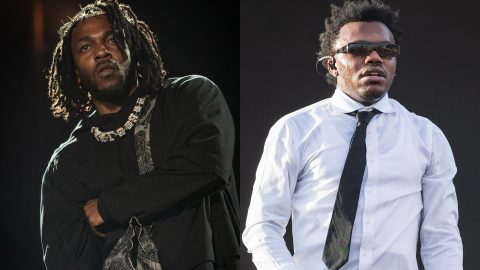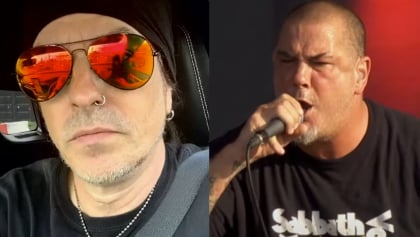
Released in the autumn of 1992, the original Candyman was an early favourite of one Jordan Peele, who was 13 when the film was released. The Get Out director was a huge horror fan, but up until Tony Todd’s casting as the titular bogeyman who appears after saying his name five times in the mirror, Peele had not seen a Black actor in a major horror role. “I was a horror fan as a kid, but we didn’t have a Black Freddy Krueger or a Black Jason Voorhees,” Peele said recently. “Even though there are many examples of Black people in horror, this one felt particularly badass.”
It was the film Peele watched “over and over” as a teenager and now, almost 30 years later, he’s co-written the screenplay for a new Candyman, a direct sequel, with director Nia DaCosta and Win Rosenfeld. DaCosta remembers everyone talking about the film when she was young. “In my community, everyone was daring each other to say ‘Candyman’ in the mirror five times,” she laughs. “Which I never did of course, because that would be very silly.”
The first film was based on short story The Forbidden by Clive Barker. It explored the urban legend of the Candyman, a 19th century Black artist who fell in love with a young white woman he was painting. When people discovered their relationship, he was captured by a white mob, his hand sawn off, covered in honey and stung with bees before being burned alive. Saying his name five times in the mirror summoned him, before he killed those who called his name with a hook that had replaced his hand.

Re-watching Candyman as an adult, DaCosta says it still shocked her. “As an adult I was like, ‘Oh this is still terrifying, still really scary”, she says. “There are pressures that come from so many corners during a studio film, a film with Jordan Peele attached… but because I was a huge fan [of the original], I let that guide me.”
Luckily, the film is a sharp, smart and horrifying re-work of the original story. Fans who have never seen the 1992 version will be able to dive straight in, but those who have will enjoy several nostalgic nuggets. New lead, Yahya Abdul-Mateen II, plays up-and-coming artist Anthony McCoy, whose latest project explores the urban myth of the Candyman after his partner’s brother recounts the story to him. McCoy’s research for helps to unfold not only the history of the Candyman, but the history of violence against Black citizens in America.
Abdul-Mateen II says he tapped into recent events in the US around police brutality to help him understand his character more, such as those involving Eric Garner, Trayvon Martin and Breonna Taylor: “Just being aware that there was a big moment in the world where we saw someone murdered on video. Then for them to be turned into a monster against their will after the fact by the press, the public. There was no shortage of examples throughout history where young black men were killed at the hands of white violence, then turned into monsters.

“They unwillingly became the names that we know today. That was the connection I made. In this story, I wanted to make sure what we did was to humanise [the victims], to allow them to have more dignity in their death than they were given in the final moments of their lives.” DaCosta adds: “I think sometimes people feel like that kind of violence… is sort of stuck in the past but we know it’s not. It’s ever present and it’s something that we have to be continually reminded of… in stories like this.”
DaCosta was wary of showing too many flashbacks in the film when it came to referencing the violence against Black lives. “You have to be respectful of the stories you’re telling,” she says. “You can never use the real-world trauma as a sort of crass entertainment.” instead, DaCosta and Peele used striking shadow puppetry to tell the stories of violence which informed the Candyman legend. “[Puppetry] is one of our oldest forms of storytelling and it just further solidifies the theme of it being about this long history of suffering, the cyclical nature of it,” DaCosta explains.

Despite the similarities in plot, Candyman is visually distinctive from its predecessor and contains many striking scenes. There’s one where Abdul-Mateen II is in a mirrored glass lift and the titular phantom suddenly appears. Later, an arresting, long-range, wide-angle shot sees the Candyman murdering a victim from afar. The physical transformation Abdul-Mateen II goes through too, from vibrant artist to a man demonically possessed is impressive: he spent hours in make-up to achieve the results.
“I remember being very young with my siblings, playing the Candyman game in the bathroom,” he says. “When I think back to those days, I think about the coat, the hook, the bees and just those iconic moments that we were given by Tony Todd, his voice, his performance. The [look]…was so important.” Abdul-Mateen II eventually morphs into a Candyman of sorts, but the new version comes with an especially dark twist, a hint of which can be found via Colman Domingo’s character, William Burke, who tells Anthony: “Candyman ain’t a ‘he’. Candyman’s the whole damn hive.”
There’s also a huge nod to the original at the film’s end, in a moment that DaCosta says she relished creating. “I don’t know how much of a spoiler I can give. But you know, just creating that new iconic thing we see at the end,” she smiles, “it was special.” The shot she’s talking of will delight fans – and could inspire newbies to seek out the original. If they do, at least they’ll be prepared…
‘Candyman’ arrives in UK cinemas on August 27
The post “The ending is special”: inside Nia DaCosta’s terrifying ‘Candyman’ sequel appeared first on NME.





